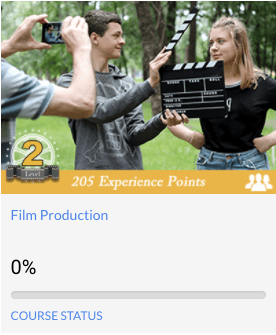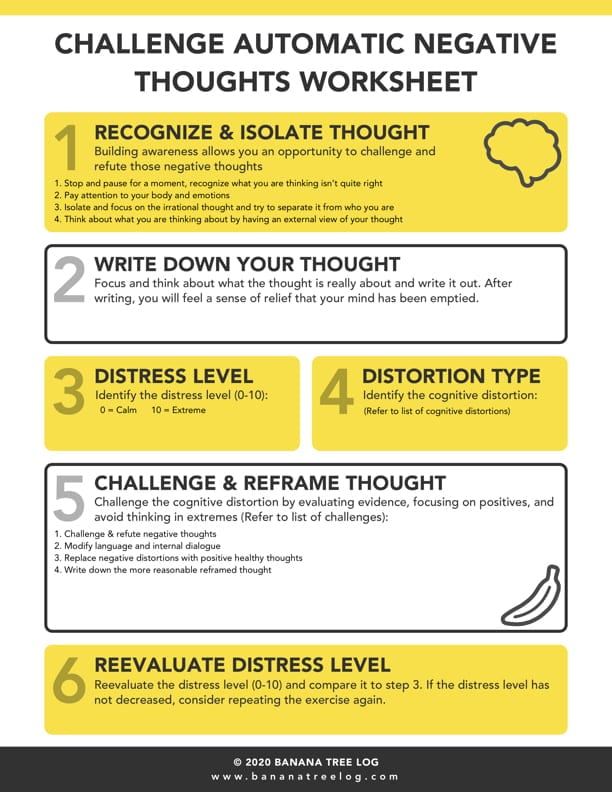Film Analysis: The Handmaid’s Tale

Summary
This week, I analyzed the first two episodes of The Handmaid’s Tale, which I thought was a really powerful depiction of Atwood’s novel. I chose to analyze these episodes because I read Margaret Atwood’s book about two years ago, and I thought it was absolutely incredible, so I wanted to see how they depicted the story on-screen. I ended up really enjoying the first two episodes, so I decided to watch a few more and continue the series.
Film Analysis
| Film Title | The Handmaid’s Tale |
| Year | 2017 – |
| Director | Reed Morano |
| Country | United States |
| Genre | Dystopian tragedy |
| If you could work on this film (change it), what would you change and why? | If I could work on this series, I might try to ensure that there are little to no inconsistencies between the original novel and this on-screen adaptation. I felt like they did a pretty good job staying true to the story line of Atwood’s novel, but there could still be improvements. |
As you view films, consider how the cuts, camera angles, shots, and movement work to create particular meanings. Think about how they establish space, privilege certain characters, suggest relationships, and emphasize themes. In addition to shot distances, angles, editing, and camera movement, note details of the narrative, setting, characters, lighting, props, costume, tone, and sound.
Ask yourself the following questions:
| TOPIC | YOUR NOTES |
| 1. Who is the protagonist? | Offred |
| 2. Who is the antagonist? | Republic of Gilead |
| 3. What is the conflict? | The women, specifically Handmaids like Offred, struggle to find power in an oppressive society that is meant to keep power in the hands of men. |
| 4. What is the theme? (summarize in one or two words) Learn more… | Power, gender |
| 5. How is the story told (linear, with flashbacks, flash-forwards, at regular intervals) Learn more… | The story is told mainly in a linear fashion, but also includes flashbacks of Offred’s life before she was forced to become a Handmaid. |
| 6. What “happens” in the plot (Brief description)? | The U.S. has become the Republic of Gilead, a totalitarian and oppressive society that forces women into roles depending on their fertility, social standing, and devotion to the state. Offred is one of the few fertile women left, so she works as a Handmaid for a wealthy couple, being forced to have sex with her Commander once a month to produce a child for the Commander and his wife. The freedom of women is practically nonexistent in this society, as you either take on your role and follow orders or die trying to escape. |
| 7. How does the film influence particular reactions on the part of viewers (sound, editing, characterization, camera movement, etc.)? Why does the film encourage such reactions? | The use of close-ups in this series really emphasizes the emotions of the characters and allows viewers to further connect with what they’re watching. Since viewers feel more connected to the characters, our reactions are more genuine and extreme. Each episode is also narrated by our protagonist, which sort of aids viewers to have particular reactions at specific times. Since we know what is going through Offred’s mind, we are subliminally encouraged to have the same thoughts and reactions as her. |
| 8. Is the setting realistic or stylized? What atmosphere does the setting suggest? Do particular objects or settings serve symbolic functions? Learn more… | I think that the setting in this series is realistic to what the New England area might look like in this future society, but is also stylized to fit the story line. The setting depicts a very lifeless atmosphere, as there is little to no sense of color or art in this world. The Wall serves a symbolic function in this story, displaying the lifeless bodies of men who have been executed for various reasons (performing an abortion, rape, being gay). This setting serves as a harsh warning to the people living in the Republic of Gilead, threatening any rebels with execution. |
| 9. How are the characters costumed and made-up? What does their clothing or makeup reveal about their social standing, ethnicity, nationality, gender, or age? How do costume and makeup convey character? Learn more… | In the case of the women in this society, the costumes of each character signify their role and their social standing. For example, all of the Handmaids wear the same outfits, all of the Marthas wear the same outfits, and all of the Wives wear similar outfits that are all blue. These differentiations between the women’s outfits tell viewers what the role of each woman is and gives us a basic understanding of their character. The outfits of the men in this society also convey their role and social standing, but to a different extent. All of the men wear outfits that are black and grey, but there are subtle differences that signify what role they play in this society. |
| 10. How does the lighting design shape our perception of character, space, or mood? Learn more… | The series primarily uses natural light in all of the scenes, which is paired with dark backgrounds to provide greater depth and emphasize on the contrast between dark and light. In Offred’s room for example, there is only one window, which often casts a single beam of light on the dark room, creating a silhouette which illuminates our protagonist. |
| 11. How do camera angles and camera movements shape our view of characters or spaces? What do you see cinematically? Learn more… | The consistent use of close-ups in this series is extremely important to the story line, as it keeps viewers connected to the thoughts and emotions of each character. In the scenes that don’t use close-ups, the camera still focuses on the faces of each character, drawing the viewers attention to minds of the women in a world where they are only seen as bodies. The series also seems to use symmetry in a lot of its shots, emphasizing particular scenes and creating a satisfying shot for viewers. |
| 12. What is the music’s purpose in the film? How does it direct our attention within the image? How does it shape our interpretation of the image? What stands out about the music? Learn more… | The music used in this series primarily serves the purpose of emphasizing the emotion and intensity of each scene. In peaceful scenes, slow and melodic music is used. Vice versa, in intense scenes, we either hear rapid and loud music or complete silence. The series also includes some popular and well-known songs, which creates a bit of irony in the story, as the music once enjoyed by the people in the U.S. is now banned. In the scene where Ofwarren sings “Three Little Birds” by Bob Marley to the child she has just birthed, we see that she hasn’t forgotten her life before Gilead. Though it is a brief moment, it makes viewers remember that their lives were just like ours before they became Handmaids. |
| 13. How might industrial, social, and economic factors have influenced the film? Describe how this film influences or connects to a culture? Learn more… | A lot of what we see in these first two episodes connects to what the United States is like today. In the flashbacks, we see Offred living her life as we do now; working for Uber, going out with friends, settling down and getting married, etc etc. As time goes on in her old life, things start to progress towards the totalitarian state that is the Republic of Gilead. It’s small things at first, like being yelled at by a stranger, or women protesting in the streets (sounds familiar, right?). But it eventually turns into the dystopian future created by Atwood, which still contains many similarities to the ideas and beliefs that people hold today. So, we have to recognize that this story, though definitely an extreme version, is based on the world we live in today and the cultures that exist in this country. |
| 14. Give an example of what a film critic had to say about this film. Use credible sources and cite sources. Example: “The Shawshank Redemption Movie Review (1994) | Roger Ebert.” All Content. N.p., n.d. Web. 24 June 2015. Find good sources… | This review talks about the first season of the series, going over how relevant it is today and discussing the key ideas of the show. Poniewozik applauds the series, claiming that the scariest part of it all was seeing the flashbacks of Offred’s old life and realizing that is was so similar to our lives today. “Review: ‘The Handmaid’s Tale’ Creates a Chilling Man’s World | James Poniewozik, The New York Times” All Content. N.p., n.d. Web. 24 April 2017. |
| 15. Select one scene no longer than 5 minutes that represents well the whole film and shows relevant cinematic elements. Explain why. | This scene shows Offred’s reaction to finding out her old friend Moira has died, and then follows her and the other Handmaid’s as they violently beat a man who has been convicted of rape to death. (Episode 1 00:42:21 – 00:47:42) I chose this scene because it showed the pure anger and resentment that Offred has for Gilead and the people that run it. She has lost someone that was so important to her because of the ruthlessness of this society, so she takes out her anger and pain on the rapist, violently beating him to death. The passion that all of the Handmaids exhibit in this scene shows their anger towards the Gilead itself, not the man as an individual. |
| 16. In the selected scene: write a sentence for each of the elements below: | |
| a. Screenwriting: | In this scene, the only dialogue we hear is the announcement from Aunt Lydia, which commences the “particicution” of this man. However, I’m sure the script gave instructions on how to act out the emotions of Offred, which were extremely powerful. |
| b. Sound Design: | As the Handmaids begin to beat this man to death, the sound goes in between silence and shouting, emphasizing the rage that these women hold and the pure passion behind their actions. |
| c. Camera Movements: | For the majority of the scene, the camera is focused on Offred’s face and her movements. This emphasizes the pure pain and anger that she is experiencing in this moment. |
| d. Light Setup: | The lighting in these scene is all natural light, as the setting of the scene is outdoors in an open field. |
| e. Soundtrack: | The music used in the beginning of this scene starts out very slow and melodic, showing the pain that Offred is experiencing. However, as we see her facial expression begin to change towards anger, the music becomes more intense. |
| 18. What’s the socio-cultural context of this film? Learn more… | This series is based on the novel by Margaret Atwood and has a lot of major socio-cultural context in regards to the path that our world has been and is on. The closer we pay attention, the more the dystopian future created by Atwood doesn’t seem so far off from our country today. With the continued battle over the reproductive rights of women, we see a major connection to the way in which Handmaids are forced to use their bodies for others. The power structure in the Republic of Gilead is also similar to the one we live in, as men hold the institutional power over women. There are a ton of other concepts and ideas portrayed in this series that remind us or even match the world we live in today. |









